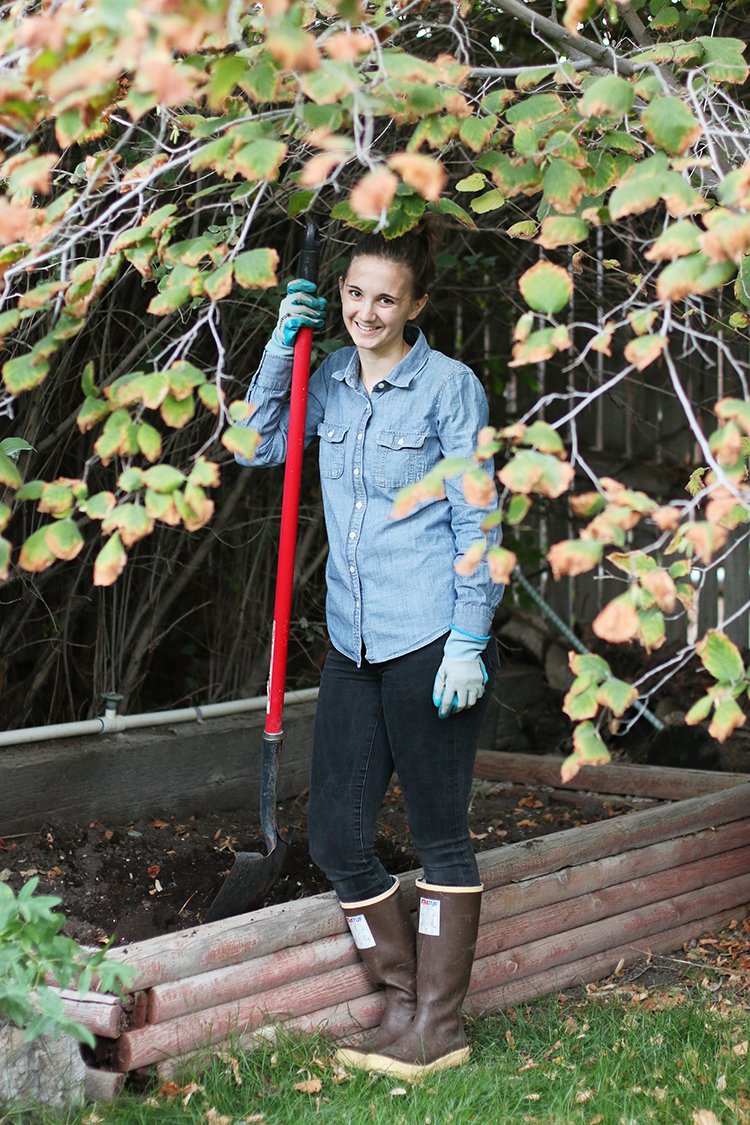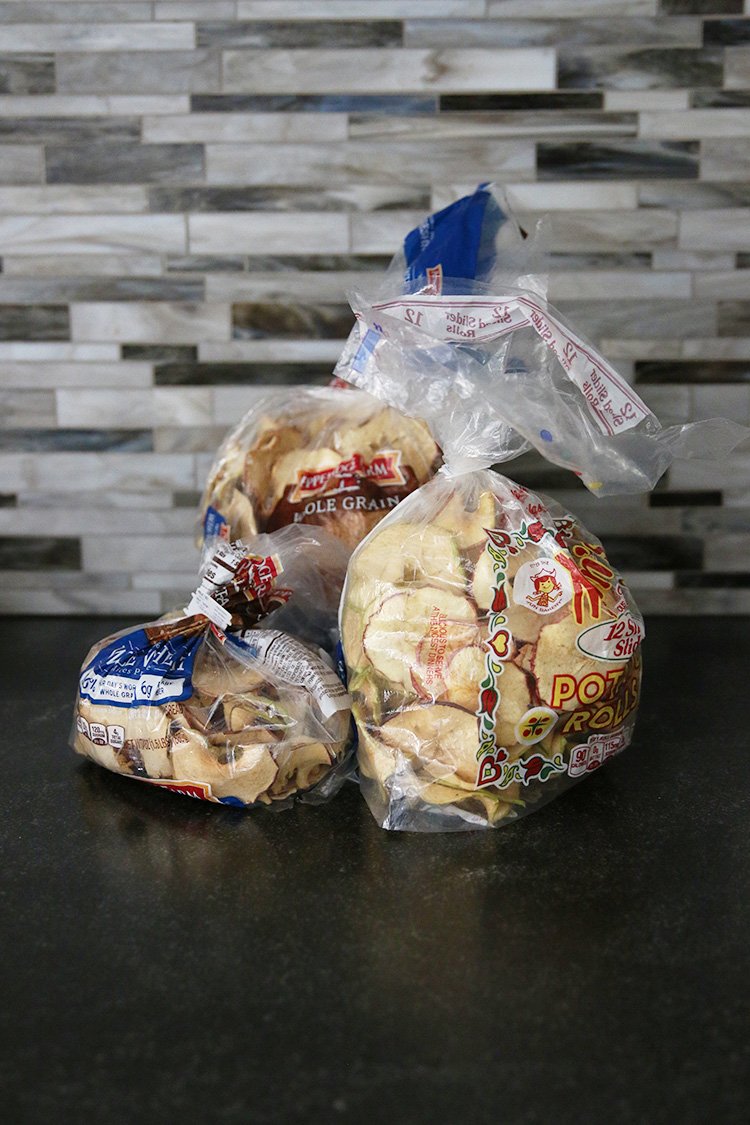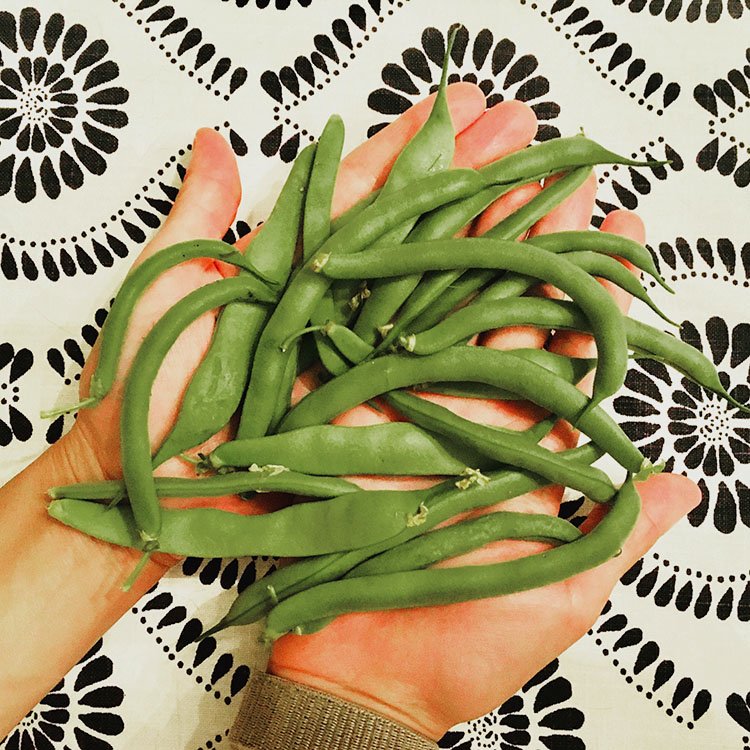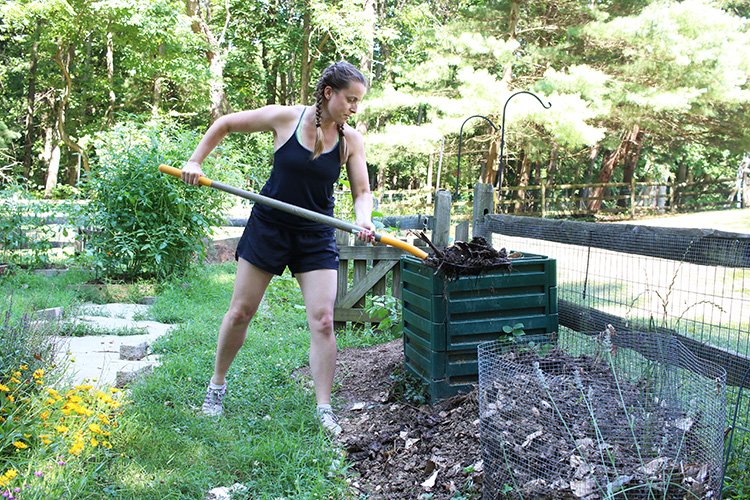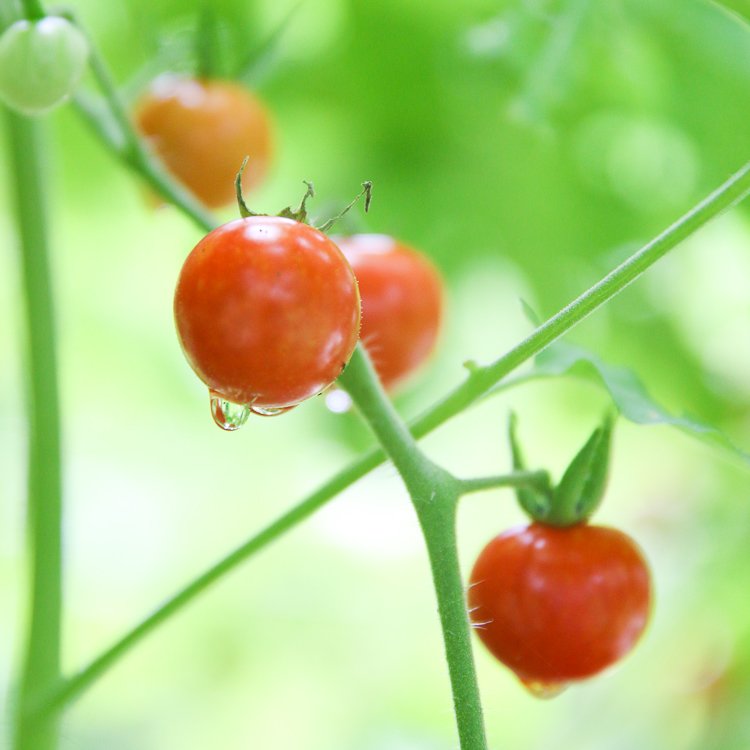10 Regenerative Tips For Healthier Soil in Your Garden and Yard
Looking to increase the soil health in your yard and garden? Try some of these tips for healthier soil in your garden and yard and be part of the Homegrown National Park movement!
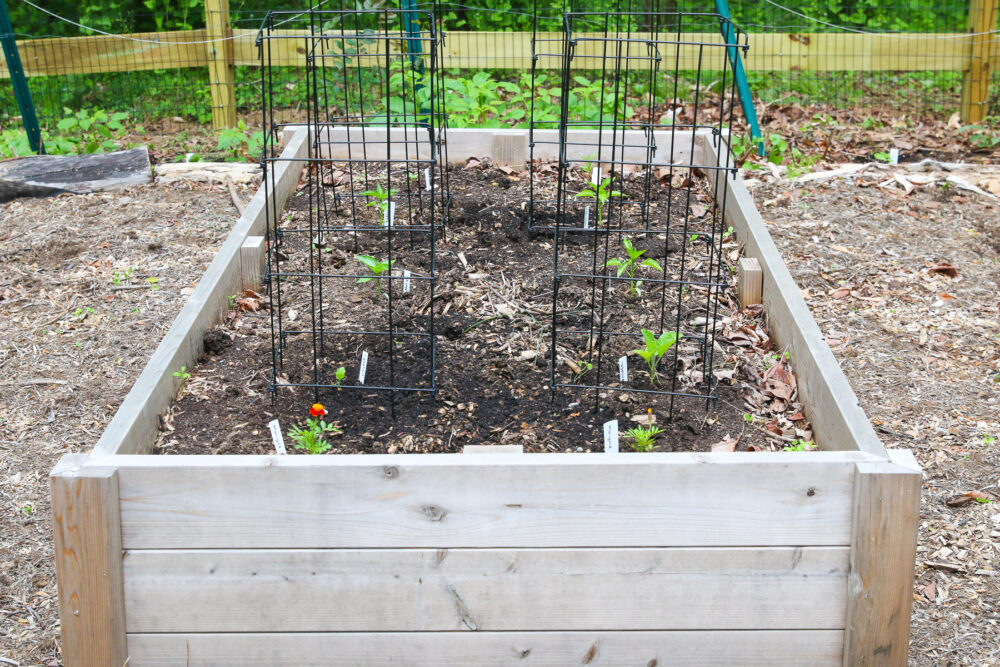
Soil might be the foundation of life. That may be a bit deep for discussing dirt. But healthy soil grows more nutritious food, sequesters carbon to reduce global warming, holds more water which mitigates the harmful impacts of drought, and helps keep waterways clean. Healthier soil is a big deal and has many positive impacts on our lives.
We can’t individually control and care for all the soil around the world, but we definitely can be responsible for the quality of the soil in our yards and, to a certain extent, our neighborhoods and communities.
Make Your Own Homegrown National Park
I love the approach taken by an organization called Homegrown National Park (coincidentally, founded by a professor and native habitat specialist who lives not far from me). Their call to action is for each of us to create small but important oases for native species and flourishing ecosystems on private property around the United States. They state:
“Our National Parks, no matter how grand in scale are too small and separated from one another to preserve species to the levels needed. Thus, the concept for Homegrown National Park, a bottom-up call-to-action to restore habitat where we live and work, and to a lesser extent where we farm and graze, extending national parks to our yards and communities.” (Homegrown National Park)
Maintaining healthy soil and taking steps related to planting and soil maintenance that support healthy soil are consistent with the principles of Homegrown National Park. When we build gardens, yards, and soil with intention, we can create thriving and biodiverse ecosystems to help restore the native habitats that have long been under duress from human destruction.
There are many regenerative practices we use in our yard to help make out soil healthier. Some of our regenerative yard and garden maintenance habits don’t align with mainstream pristine aesthetic trends.
However, we need to change the narrative of what constitutes a beautiful yard. We should ditch perfectly manicured lawns and gardens in exchange for native plants, food gardens, and rewilded spaces that support more biodiverse ecosystems and much healthier soil.
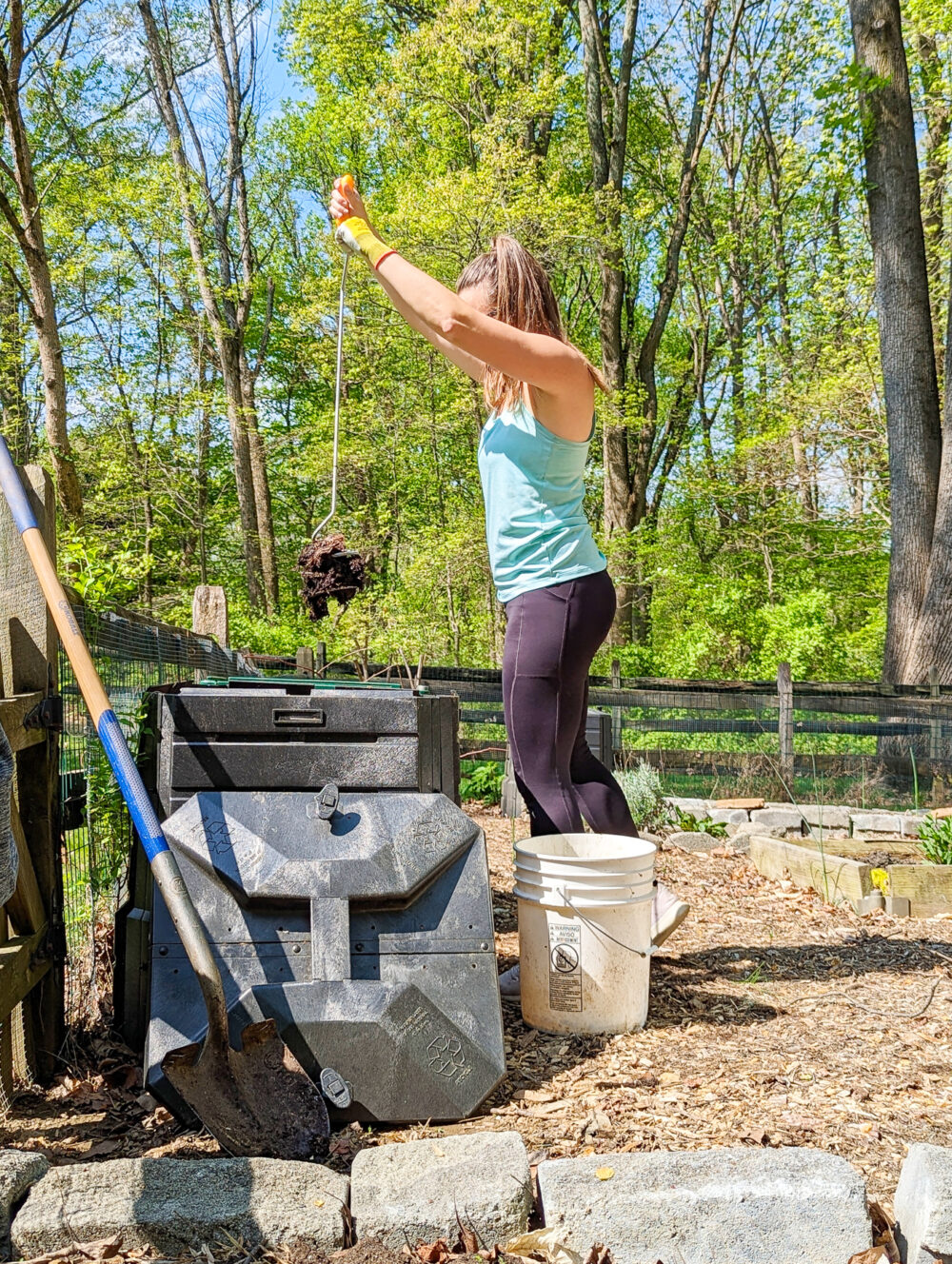
10 Tips For Healthier Soil In Your Garden
As you work in your garden or take care of your yard this season, consider adopting these practices to nurture healthier soil in your yard and garden.
Compost & Add Organic Matter to Soil
If you’ve been around the blog for even a hot second, you know I’m a composting nerd. We compost our food scraps and yard waste in a bin in our garden and turn it into garden gold.
Composting makes all the nutrients in our food scraps and yard waste available to replenish soil and feed growing plants. Composting also feeds the population of organisms that support a flourishing ecosystem in the soil.
There are so many different ways to compost for a variety of lifestyles. Check out Everything To Know About Composting for tons of resources about composting and the Compost Chronicles series for interviews with all sorts of families who compost at home in a bunch of different ways.
Use Cover Crops
Bare soil is generally unhappy soil. Plants in the soil have symbiotic relationships with organisms in the soil to keep the soil healthy and teeming with life. Cover crops are secondary crops that naturally fix nitrogen, an important nutrient, into the soil. They are planted during seasons when the main crops are not in season or when the fields need a break for nutrient replenishment.
We can use cover crops in our food gardens too. Plants like clover are great for planting in between seasons of vegetable growing and harvesting.
Clover often shows up in the grass as well. Regenerative gardening theory suggests that weeds like clover show up in lawns for a reason. Weeds are one of nature’s tools to show us what a space needs. When clover, a nitrogen-fixing plant, shows up in our lawns, it’s telling us that the soil needs nitrogen. Let the clover thrive in your lawn and you might be surprised how much healthier and resilient your lawn becomes.
Rotate Crops from Season to Season
Each type of plant takes and gives certain nutrients to the soil. By rotating which annual crops you plant in your garden each year, you help diversify the sources and uses of nutrients for the soil in a particular area of the garden.
For example, some food plants like beans are nitrogen-fixers (they return nitrogen to the soil) while other food plants absorb a lot of nitrogen from the soil. Alternating these crops from year to year can help keep soil healthy and prevent it from lacking one or two particular types of nutrients. It can also help reduce the risk that plant diseases carry over from year to year in the soil and infect plants in successive seasons.
Try Companion Planting
Similar to rotating crops in some ways, companion planting involves growing compatible plant species together, which can help deter pests, improve nutrient uptake, and enhance soil health. For example, planting nitrogen-fixing plants like beans alongside heavy feeders like tomatoes can benefit both plants. As is the case in most gardening and ecosystems, a wide variety of species, crops, plants, creatures, etc… makes for a more vibrant and life-filled natural space.

Embrace Certain Weeds
Weeds aren’t such a bad thing. Weeds are one way that nature regenerates healthy ecosystems. Weeds also help nature tell us what it needs. For example, if a garden or lawn has lots of clover or other nitrogen fixers growing in it, the soil likely needs more nitrogen (as I mentioned above). When weeds with large, low leaves pop up, the soil is telling us it needs cover from the sun and doesn’t want to be bare. We often find dandelions, which have long tap roots, in hard soil that benefits from the dandelion roots breaking it up as they grow and spread.
Weeds right around plants might need tending and plucking. But consider that some weeds are good for the soil depending on the type of weed, the type of soil, and the current use of the land. I only pull weeds that are crowding out the fruits, vegetables, and flowers in our garden. Otherwise, I let them be.
If the weeds in the walking path get really long, I trim them with a weed wacker. This allows the roots to remain intact in the soil, supporting the underground ecosystem, while the trimmed leaves act as a mulch to protect the soil from above.
Occasionally, I lay flat cardboard boxes across larger swaths of weeds to smother them and create cardboard walking paths between our raised beds. Eventually, the cardboard and weeds work together with the organisms in the soil to break down and feed the soil. For a more aesthetic look, you can lay down cardboard and then cover it with a thick layer of woodchips for a cleaner appearance that still works with the soil.
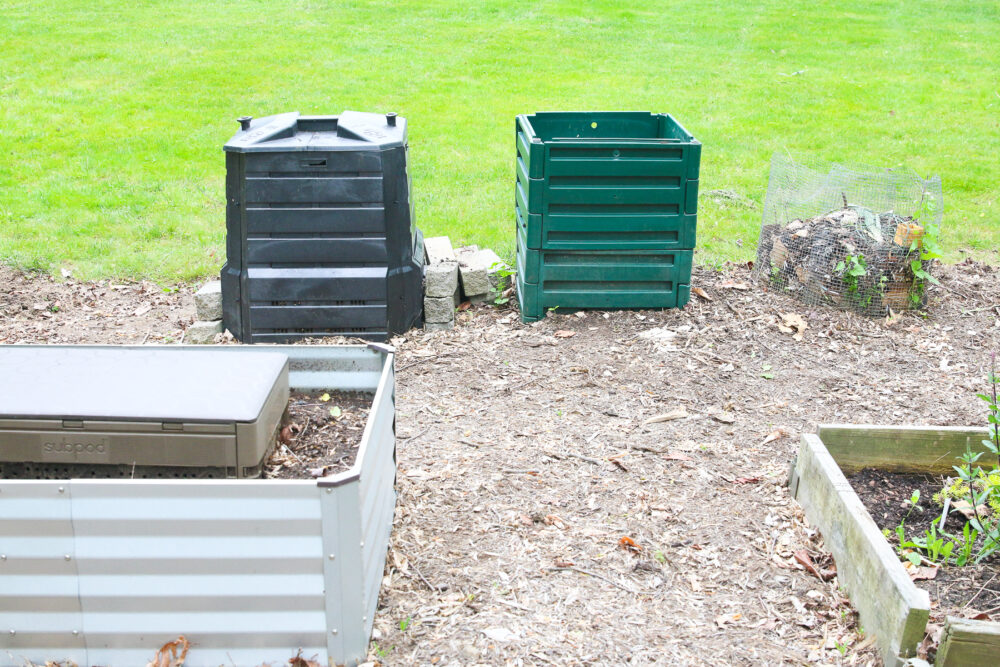
Add Wood Chip Mulch
Provided they are not treated with synthetic dyes or other chemicals, wood chips are a great source of carbon that cover the soil and slowly break down over time to feed the ecosystem in the underlying soil.
We live in the woods, so we have lots of trees in our yard and large branches drop regularly in storms. As trees fall in our yard, we look for ways to repurpose the wood. In the past, I used some large branches to create an edge around the raspberry beds. Another time, we borrowed a wood chipper to shred branches into woodchips to use as mulch in the garden.
ChipDrop is an app that offers free wood chips delivered to your home. It’s really great if you need a lot of woodchips and have flexibility about when you receive them and what types of trees were chipped into the wood. My friend, the owner of Renegade Flower Farm, uses ChipDrop to request large quantities of woodchips for the walking paths on your flower farm.
We haven’t tried it yet because we haven’t needed the volume of chips that most tree companies drop off. When you sign up to receive chips, you do not get to request a set amount or drop-off date. So you could end up with a mountain of wood chips in your driveway on any given day. I’m not ready to commit to that. But if you have a large need for chips, this could be a really good option (especially because it’s free!).
We have received free wood chips on two occasions. Last year, I asked the owner of Renegade for a recommendation from one of the smaller companies she’s connected with through ChipDrop. When I contacted them directly, they were able to come to my house on a day when the truck wasn’t very full. I did have to wait a couple of weeks until they had a small load and were near my home.
We also had some tree work done last year. When the company chopped up all the branches and trees that fell, I asked them to leave the woodchips in a pile along the side of our yard instead of taking them away for us. They were happy to oblige (and save time not having to dispose of the woodchips themselves).
Inoculate Soil
Soil inoculation is the practice of taking a small amount of soil from a place with rich soil, like the forest floor, and adding it to your garden. Through this process, you can introduce a biodiverse population of good bacteria, microorganisms, and other creatures that hopefully reproduce and benefit your soil.
We have certain areas of our yard that are forested, so this should be pretty easy for me to try. I haven’t given it a go yet, but I’ll certainly report back if and when I do it.
If you try this, be respectful of the location from which you take the soil. Be sure it’s legal and not an area where everyone is doing the same thing. If everyone took a handful of soil from the same place, that patch of nature wouldn’t be thriving so much anymore.
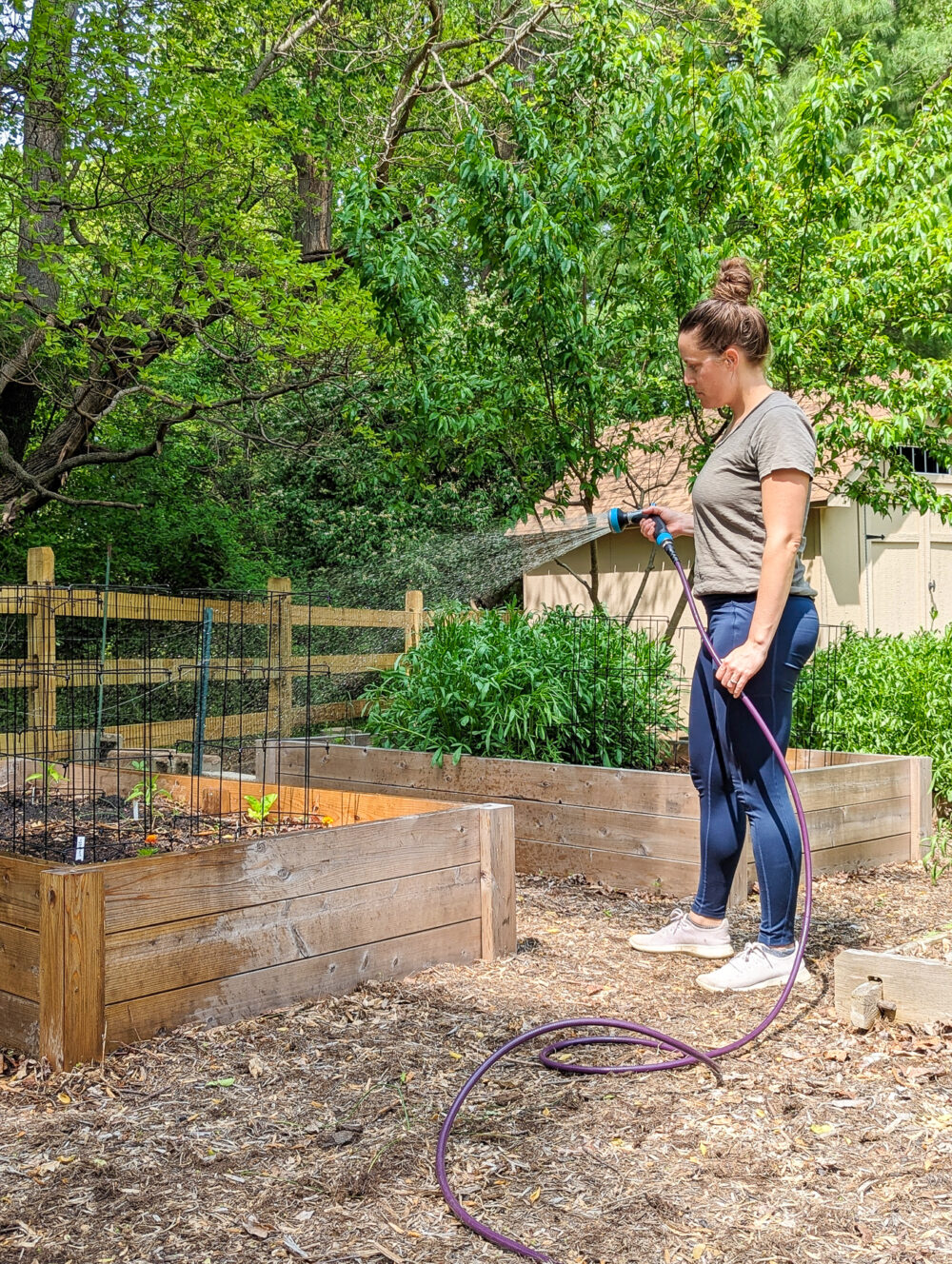
Water Properly
Most plants and healthy soil benefit from longer, deeper, and less frequent watering (as opposed to frequent and more shallow watering) because it allows the water to seep deeper into the soil. Roots reach for water, so when soil is watered more deeply, roots also grow deeper. This helps plants find more nutrients in the soil and also establish stronger foundations. Additionally, it results in less water evaporation from the soil’s surface, which allows plants access to more water without using any additional water resources.
Leave the Roots
Perennial plants will stay in the soil (one of the qualities that makes them great for healthy soil). But at season’s end, it’s time to remove the annuals to make space for new plants next year. Instead of pulling the plants as soon as they are done producing, consider leaving some of them for birds and beneficial insects to use as food sources, protection, and breeding spaces.
Additionally, when you are cleaning up the plants, cut stems and flora above ground but don’t pull the roots up from the ground (unless the plant is diseased or causing issues). The root systems have built symbiotic relationships with the microbes and fungi in the soil.
Pulling them up can destroy the biodiversity in the soil and harm the mycorrhizal networks which connect individual plants together to transfer water, nitrogen, carbon, and other minerals. Furthermore, the roots will break down over the winter and continue to contribute to healthier soil in the coming season as they decompose and return their nutrients to the soil.
Ditch Perfect Lawns
The perfectly manicured lawn is falling out of favor for good reason. While I fully support open spaces for play and rest in a yard, a “perfect” lawn requires lots of chemicals and irrigation to maintain. The artificially green color of a chemically-treated lawn isn’t really something to celebrate.
Instead of attacking every single “weed” that shows up in your lawn with herbicides, let them be and appreciate that they will likely stay green and lush through drier conditions than traditional grass. As I noted above, the weeds show up for a reason and reflect the needs of the soil underneath them.
Chemicals like fertilizers, herbicides, and pesticides kill many of the organisms that support a healthy ecosystem in the soil. Although they artificially turn the grass green, they often kill the soil underneath the grass and increase the grass’ reliance on more chemicals.
I’d love to know how else you help maintain healthy soil in your yard and gardens. Any tips that we missed? I’m sure that are lots of other wonderful ideas to help contribute to the conversation and change the narrative around what perfect, gorgeous yards and private green spaces should look like. Let’s update the conversation!
If you like this post, you might also like
11 Important Benefits of Composting
Where To Buy Organic Seeds Online
15 Reasons To Compost (that have nothing to do with the planet)

Jen Panaro
Jen Panaro, founder and editor-in-chief of Honestly Modern, is a self-proclaimed composting nerd and advocate for sustainable living for modern families. To find her latest work, subscribe to her newsletter, Stepping Stones.
In her spare time, she’s a serial library book borrower, a messy gardener, and a mom of two boys who spends a lot of time in hockey rinks and on baseball fields.
You can find more of her work at Raising Global Kidizens, an online space to help parents and caregivers raise the next generation of responsible global citizens.


